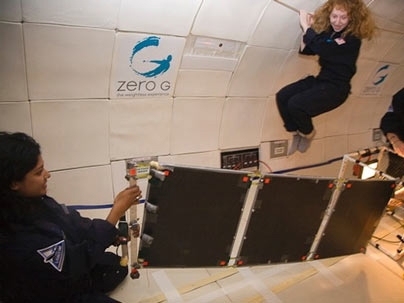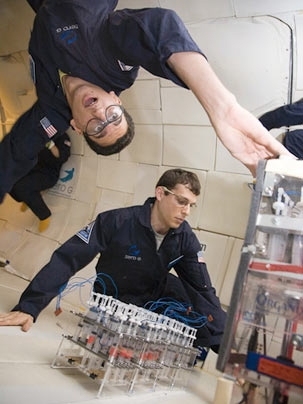On Sunday, June 21, 30 MIT students and faculty members took off on a micro-gravity research flight from Titusville, Florida, (next door to Kennedy Space Center) to carry out experiments on a variety of projects that could help future astronauts or help in the development of new satellites.
The flight, on a modified Boeing 727 jet run by the Zero-G Corporation (co-founded by X-Prize Foundation chairman Peter Diamandis '83, SM '88), produces intervals of weightlessness or reduced gravity by flying a series of parabolic arcs. On this flight, in addition to the micro-gravity arcs, the plane also flew several arcs that simulated the reduced gravity of the moon and Mars.
The projects onboard the flight included studying human factors such as the effect of weightlessness on the spine and on perception of slopes and distances, the design of new spacesuits, development of a device to search for signs of life on Mars, the deployment of solar panels for an MIT student-built satellite to search for orbital debris, and tests of a new type of thruster for satellite control.
The solar panel test, says MIT Department of Aeronautics and Astronautics senior Jillian James, was designed "to look at deployment dynamics and stability, measure deployment time, and test the motor control capability. Our objective was to increase the flight readiness level of one of our satellite's most critical components, as no student-built satellite has ever been launched with deployable solar panels. The deployment was a great success."
See more photos and videos here.







